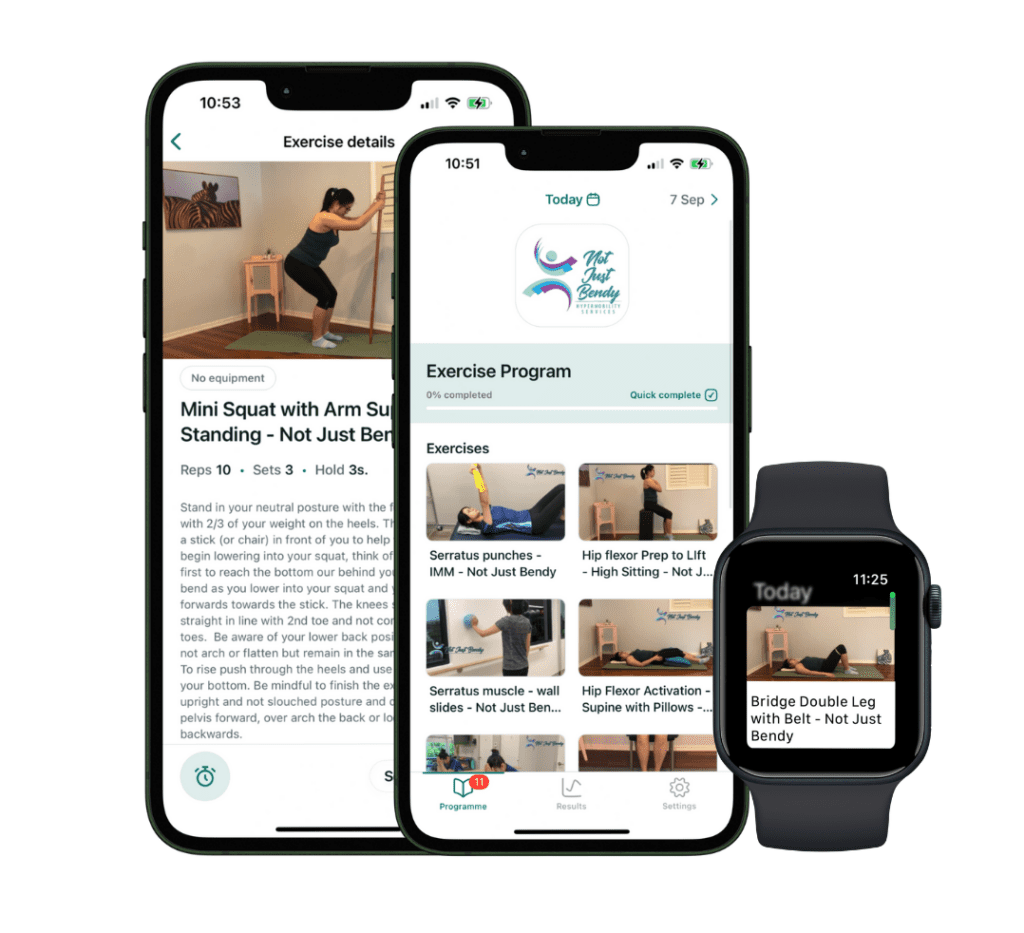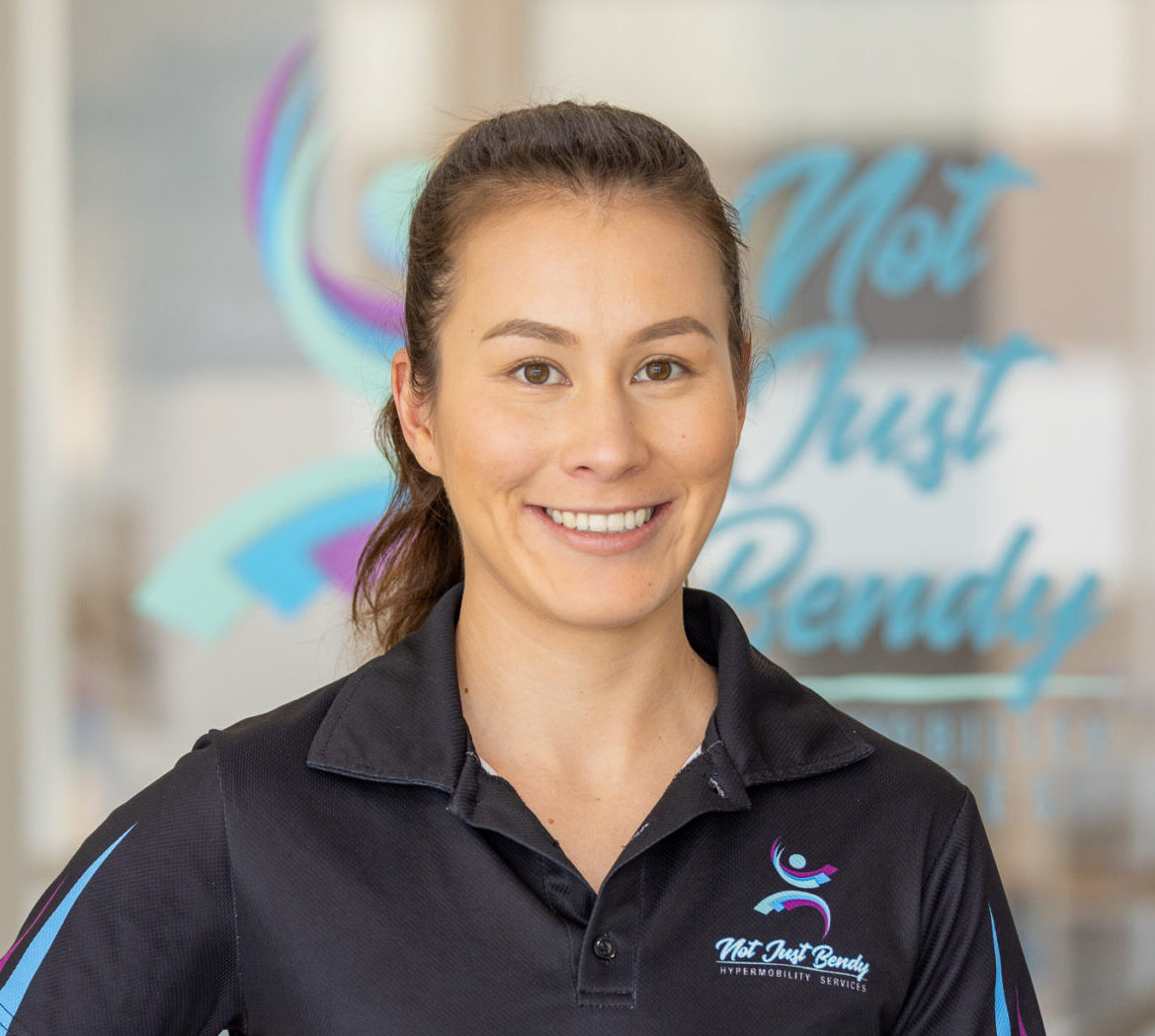Hypermobility Spectrum Disorders (HSD) and Hypermobile-Ehlers Danlos Syndrome (H-EDS) are conditions characterised by joints that move beyond the normal range, often leading to joint pain, stiffness, instability, and various other symptoms. At Not Just Bendy, we recognize the importance of early detection and proactive management to mitigate the impacts of these conditions. Our comprehensive screening and prevention services are designed to identify hypermobility and provide strategies to prevent complications in those clients who may only be experiencing mild or moderate symptoms.
While not everyone with hypermobility will develop problems or pain, we understand that active individuals, especially women, with hypermobility and mild recurrent pain symptoms can greatly benefit from our focused postural and movement rehabilitation programs. At Not Just Bendy, we go beyond traditional physiotherapy by thoroughly examining and addressing the underlying movement patterns that often contribute to joint and muscle issues. Our approach not only alleviates pain but is also preventative, providing our clients with the tools and knowledge to manage their conditions effectively.
Understanding Hypermobility
Hypermobility refers to joints that move beyond the typical range expected for a particular joint. While some degree of flexibility is normal, excessive joint laxity can lead to issues such as:
- Joint/Muscle Pain: Frequent dislocations or subluxations (partial dislocations) can cause significant discomfort.
- Joint/Muscle Stiffness: Hypermobile joints can sometimes overcompensate leading to fatigue and joint/muscle stiffness
- Injury Susceptibility: Increased risk of sprains, strains, and other injuries due to unstable joints.
- Fatigue: The additional effort required to stabilise hypermobile joints can lead to chronic fatigue.
- Circulatory (POTS), Gut (IBS) & Allergy issues: Screening for conditions associated with hypermobility can often provide a greater understanding of the underlying physiology of the body.
- Musculoskeletal Issues: Hypermobile joints often result in musculoskeletal problems, requiring tailored management and care.

Why Screening is Crucial
Early detection of hypermobility is key to managing symptoms and preventing complications. Screening allows for:
- Customised Management Plans: Tailored exercise and therapy programs to strengthen joints and improve stability.
- Informed Lifestyle Choices: Guidance on activities and habits that support joint health and overall well-being.
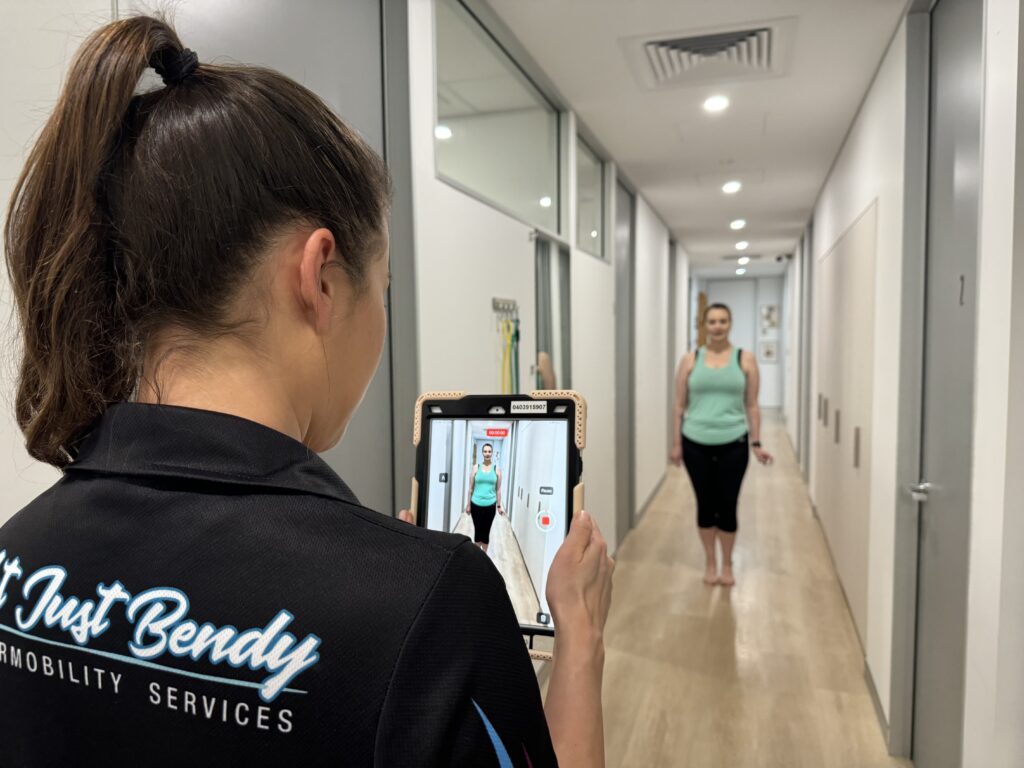
Our Screening Process
At Not Just Bendy, our hypermobility screening process involves a thorough assessment to determine the extent of joint laxity and associated symptoms. Our approach includes:
1. Medical History Review: Gathering detailed information about your health, family history, and any symptoms you may be experiencing.
2. Physical Examination: Conducting a thorough assessment of your functional movement patterns, joint range of motion, stability, and muscle strength etc.
3. Functional Assessments: Evaluating your ability to perform daily activities and identifying any limitations or difficulties.
4. Imaging Tools: Utilising ultrasound imaging and/or video analysis, if necessary, to examine any faulty muscle movement patterns.
Prevention Strategies
Preventing the complications associated with hypermobility involves a multifaceted approach. Our team at Not Just Bendy employs evidence-based strategies to help manage and prevent symptoms:
1. Exercise and Strength Training: Customised exercise programs designed to strengthen muscles around hypermobile joints, enhancing stability and reducing the risk of injury.
2. Joint Protection Techniques: Educating patients on how to move and perform activities in ways that minimise stress on their joints.
3. Pain Management: Offering various therapies, including manual therapy, physiotherapy, and modalities such as heat and cold therapy, to manage pain effectively.
4. Postural Training: Teaching proper posture to reduce strain on hypermobile joints and improve overall function.
5. Lifestyle Modifications: Advising on appropriate activities and ergonomic adjustments to support joint health.
6. Program setup: advice on your gym-based or sport including modification or enhancements. Attendance at our “Balanced & Strong” pilates and weight based exercise classes may also be recommended.
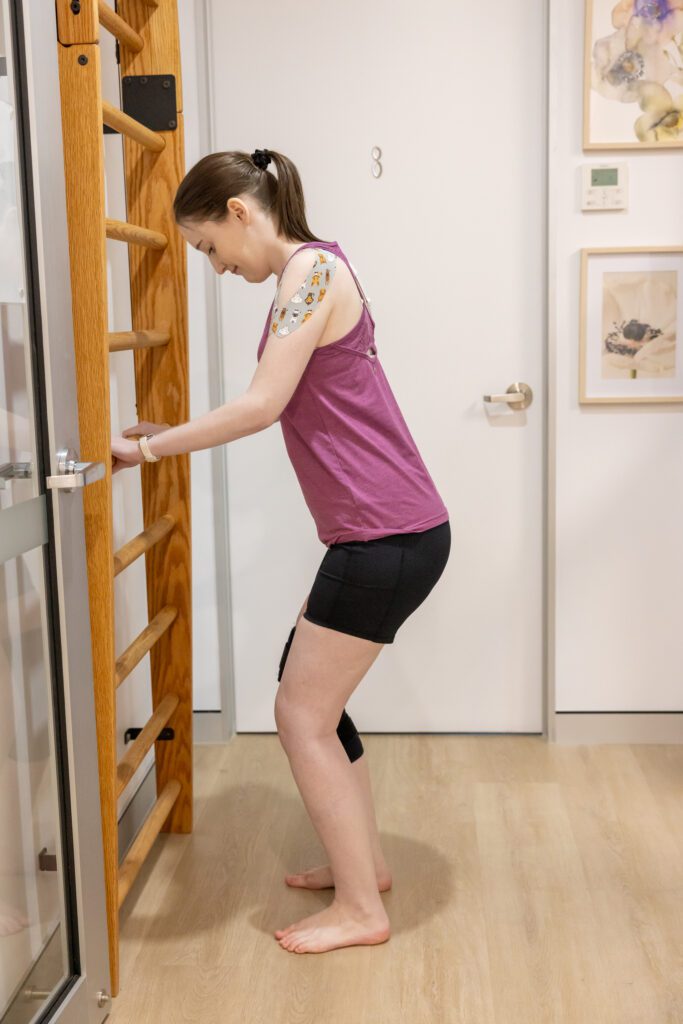
Take the Next Step
If you suspect that you or a loved one may have hypermobility, or if you are experiencing symptoms associated with EDS or HSD, don’t wait to seek help. Early screening and preventive measures can make a significant difference in managing these conditions effectively. Contact our friendly reception team today to schedule your hypermobility screening and start your journey towards better joint health and overall well-being.
Evidence-Informed Care for Zebras

100% Hypermobility-Dedicated Team
Industry-Leading Founder
Tailored Management for Hypermobility
Brand New Facility & Onsite Pilates Gym
Disability-Friendly Facilities
Neurodiverse, LGBTQIA+ Friendly Practice
How can we help?
We’re here to answer any questions you may have.
We prefer online contact whenever possible – reach out to us and we’ll respond as soon as we can.
Tel: (07) 3123 4826
Fax: (07) 3532 8704
Email:
Address:
Freeway Office Park 2
Building 9. Level 1
2728 Logan Rd
Eight
Mile Plains QLD 4113
Meet Our Team
Meet your dedicated and empathetic team of professionals at Not Just Bendy
Our Affiliations



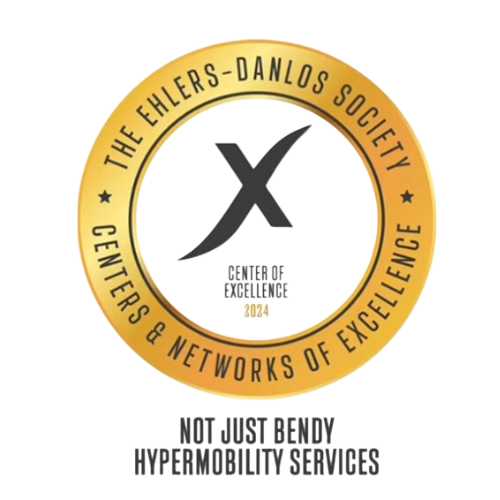

Join Our Newsletter!
Stay in the loop with the latest information on hypermobility.
Always Forget Your Exercises? We have A Free App!
We understand that keeping up with your exercise routine can be challenging, especially when balancing a busy schedule. That’s why we’re excited to introduce our free PhysiApp client app – a convenient, user-friendly tool designed to help you stay on track with your physiotherapy exercises and achieve your health goals.
Why Use PhysiApp?
- Perfect Form, Anytime, Anywhere
- Track Your Progress Online and Offline
- In-App Reminders to Stay Motivated
- Over 200 Special NJB Exercises for those with Hypermobility & EDS
